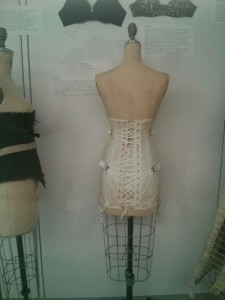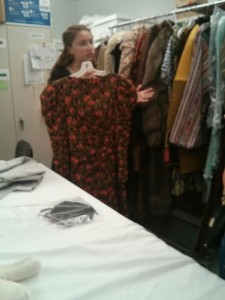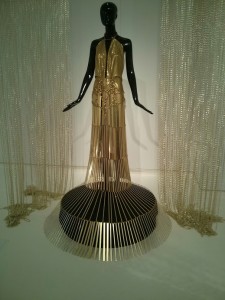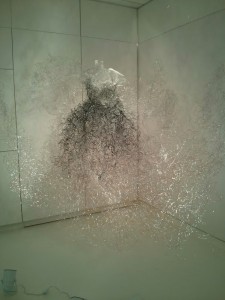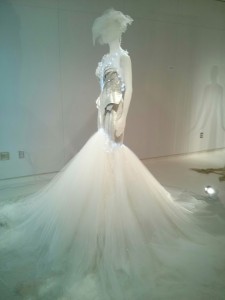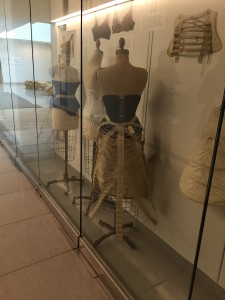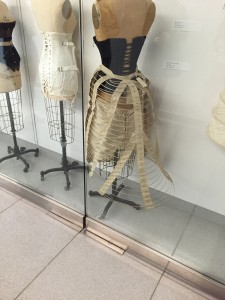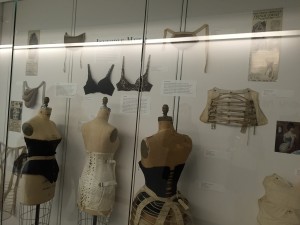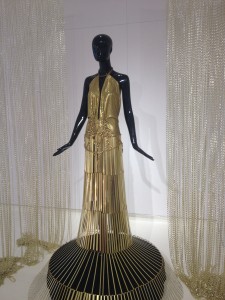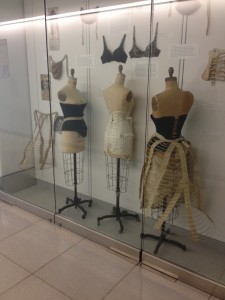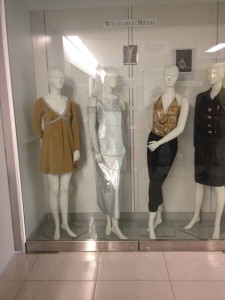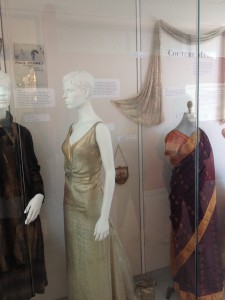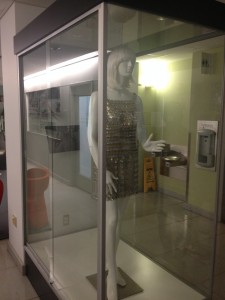Last Sunday I attended the showing of the Heavy Metal Exhibit curated by Sam Stern in the Human Ecology Building. I had seen the exhibit a few times going in and out of classes, but was excited to learn more about what it was exactly about.
To start off the tour, we saw the Fiber Arts and Wearable Art Exhibition in the Jill Stuart Gallery. Since I am a Fiber Science major, I had classes with the people who had designed these exhibits. I really enjoyed seeing what each person had created and learning more about the thought process behind each as well. The Fiber Science and Apparel Design program is something that totally fascinates me, and I was thoroughly impressed with each of their exhibits.
Following this, we started the real reason for our visit, the Heavy Metal exhibit. Starting with the invisible metals, we saw undergarments throughout time and how they shaped the ideals and goals of the people who were wearing them. Next it moved onto the ‘Rock’ stage where metal was more than just a material; it was also a way of living during this time period. This was followed by some Chanel Pieces that had the classic metal finishing. The last part of the exhibit contained six outfits that all had metal incorporated somehow. Because of the technology of the time, if dresses were to have gold or silver quality to them, they would be made completely of 16 karat gold. These dresses were no exception. We learned the history of both the dresses and those who wore them. Another outfit was a swimsuit that was bought for one of Frank Sinatra’s mistresses that was made completely of gold as well. In addition to dresses and swimsuits, there was one Indian sari that was also made of metal. The entire collection was beautiful. Seeing these pieces and learning about their history was extremely interesting and informing. In addition to seeing how metal was used throughout the history of fashion, it also illuminated how much apparel changes over time. It was interesting to see these changes in the collection as well.
In addition to this amazing exhibit, we were able to see the collection that the Fiber Science and Apparel Design program has. In this collection we saw pieces designed by the Martha Van Rensselaer herself along with the very dress that Eleanor Roosevelt wore to her husband’s presidential inauguration. Having these pieces of history so close to where we learn is amazing to me. I really enjoyed the tour and exhibit and learning more about the history of fashion.






